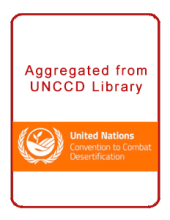Land Library
Welcome to the Land Portal Library. Explore our vast collection of open-access resources (over 74,000) including reports, journal articles, research papers, peer-reviewed publications, legal documents, videos and much more.
/ library resources
Showing items 1 through 9 of 36.What’s the goal here? To sustainably manage forests, combat desertification, halt and reverse land degradation, and halt biodiversity loss. Two billion hectares of land on Earth are degraded, affecting some 3.2 billion people, driving species to extinction and intensifying climate change.
Facts and Figures: ➡ Every minute, 23 hectares of arable land are lost due to drought and desertification.
Ecosystems and Biodiversity Facts and Figures # The IPBES Report (5) stated that “around 1 million animal and plant species are now threatened with extinction, many within decades, more than ever before in human history”.
Meeting the Sustainable Development Goals requires drylands sustainability. Treating drylands as global environmental commons enables better tailored governance responses. Key nested governance elements for drylands involve setting goals, monitoring and delivering sanctions across scales.
‘Over the past three decades hundreds of thousands of farmers in Burkina Faso and Niger, on the fringes of the Sahara Desert, have transformed large swathes of the region’s arid landscape into productive agricultural land, improving food security for about three million people.
This publication supports processes related to rural communities’ resilience in implementing land restoration of the Great Green Wall Programme on the ground.
Life on Earth depends on healthy soils. The soil under our feet is a living system – home to many fascinating plants and animals, whose invisible interactions ensure our well-being and that of the planet.
It is estimated that 20% of global land is either degraded or undergoing degradation, leading to an annual loss of 12 million hectares of productive land (UNCCD 2017). In Africa, some 715 million ha are degraded, including 65% of all arable land, 30% of all grazing land and 20% of all forests.
Established in 1994, the United Nations Convention to Combat Desertification (UNCCD) is the sole legally binding international agreement linking environment and development to sustainable land management.


